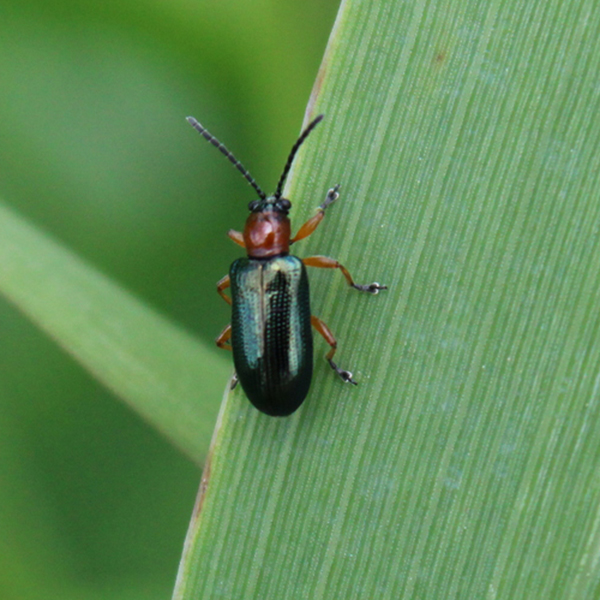MORE INFORMATION:
iNaturalist
Wikipedia
PNW Pest Management Handbook
Cereal leaf beetle (Oulema melanopus)
Biology and life history: Cereal leaf beetles are small, slender, and brightly colored with a black-blue head, orange-red thorax, and yellow legs. They have one generation per year. When the spring starts to warm up, the overwintering adults emerge and find cereal host plants. After mating, females lay 50 to 300 yellow-orange-colored eggs on host leaves during her life of two months. Larvae with a dark head and yellow-orange bodies feed on leaves and are covered by slimy frass. Mature larvae drop to the ground and burrow in the soil to pupate, which later emerge as adults in 10-21 days and start to feed on cereal crops until they overwinter in hollow grass stems, plant debris, or other structures.
Host plants and crop damage: Adult and larvae feed between the leaf veins of a wide range of cereal crops (e.g., wheat, barley, rye, oat) and grasses, particularly favoring young plant parts. Larval feeding can lose up to 80% of leaf tissue, turning the leaves white and reducing crop yield by 30-50%.
Management: Parasitic wasps and insect predators such as lady beetles effectively control these pests, but these beneficial insects can also be killed by the insecticides used to control cereal leaf beetles. Hence integrated pest management strategies are suggested, such as promoting biological control by beneficial insects and using insecticides only as a last resort. Leaving field margins undisturbed or planting perennial flowers and managing beetle banks enhance parasitoids and predators. Tillage or soil disturbance can kill parasitoids in soil. Also, rotating cereal crops with other crops helps break pest life cycles in crop fields. In the areas with heavy cereal leaf beetle infestation, one-time application of certain insecticides (e.g., lambda-cyhalothrin, zeta-cypermethrin in wheat) may help minimize yield loss.

